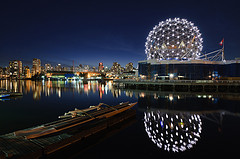Justin D’Souza
INTD 105 Science Writing
Thoughts on the Skype Call with Glenn McClure
Professor McClure gave a multitude of interesting facts and anecdotes regarding his current experiences in the Antarctic. Currently, he has taken many different recordings of sound…from seals, to the crunch of snow, to the aquatic sounds of animals deep under the ice. He hopes to integrate these natural sounds into his music derived from the data to make pleasing melodies that the public would want to here. He also described the power of the weather…in a flash, the fog can completely remove any frame of reference. Left, right, up, and down all become the same thing, and they only have a GPS to rely on for location data. A challenge for Professor McClure will be to add these emotions of terror and beauty into his music while also remaining true to the data.
I inquired as to how he would spread public awareness as to his music. He hopes to conduct concerts with the data music, as well as work with the other artists to create bundles of music and photos and paintings to sell. He hopes the public will learn to appreciate the work being done after looking at the art created from the data. Science is objective…it deals with facts, not the scientists’ emotions. But McClure states that “scientists are emotional people too!” His music will bring their emotions to life.
In his closing remarks, Professor McClure put forward and extremely thought provoking idea. The heroic expeditions of Shackleton and others was for pride…to say that they were the first to explore the ice. But McClure believes we are in a new era of heroic expedition. We no longer explore for pride and bragging rights, but for science and art. I thought this was quite a profound statement.
